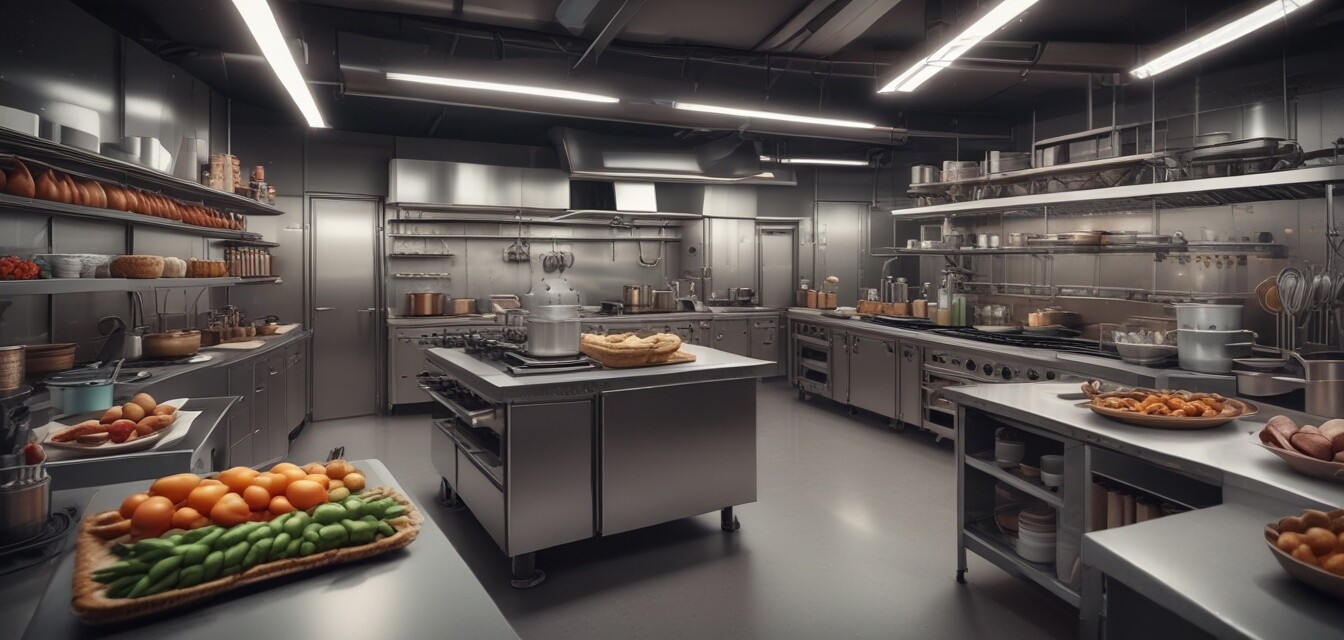
Disclosure: The FTC requires that this article indicate that it was created using AI and is not based on personal experience. It includes affiliate links, which means we may earn a commission if you purchase through these links at no extra cost to you. As Amazon Associates, we earn from qualifying purchases. Product recommendations and endorsements were generated by AI and do not reflect personal opinions or real-world use.
Upcoming trends in commercial cooking equipment
Key takeaways
- Technological innovations are shaping the future of commercial cooking.
- Sustainability and energy efficiency are becoming priorities for equipment.
- The integration of smart technology enhances cooking precision.
- Multi-functional equipment is gaining popularity to maximize space and efficiency.
- User-friendly designs and safety features are crucial for group cooking scenarios.
As the culinary world continues to evolve, so does the equipment that supports it. Emerging trends in commercial cooking equipment focus on innovations designed to enhance group dining experiences. These changes reflect a growing emphasis on sustainability, efficiency, and technology integration, making it essential for professionals in the kitchen to stay updated on the latest advancements. Below, we explore some of the key trends revolutionizing the commercial cooking landscape.
1. Smart kitchen technology
With the rise of the Internet of Things (IoT), smart kitchen technology is transforming commercial cooking. These innovations not only streamline cooking processes but also improve consistency and quality. Smart ovens, connected refrigerators, and programmable cooking equipment allow chefs to monitor and control their appliances remotely.
Benefits of Smart Technology
- Remote monitoring and adjustments
- Improved cooking precision
- Real-time inventory management
- Energy consumption tracking
2. Focus on sustainability
As environmental consciousness grows, the demand for sustainable cooking equipment is on the rise. Many commercial kitchens are opting for energy-efficient appliances that minimize waste and reduce carbon footprints.
Types of Sustainable Equipment
| Type | Features |
|---|---|
| Induction Cooktops | Higher energy efficiency, faster cooking times. |
| Energy Star Equipment | Meets government standards for energy efficiency. |
| Water-Saving Dishwashers | Reduces water usage without compromising cleanliness. |
3. Multi-functional appliances
Space limitations in commercial kitchens are leading to the popularity of multi-functional appliances. These versatile tools combine multiple functions, such as frying, grilling, and steaming, into one unit, allowing chefs to maximize workspace efficiency.
Advantages of Multi-functional Equipment
- Saves space and reduces clutter
- Cost-effective by consolidating equipment
- Increased versatility for diverse cooking styles
4. Enhanced safety features
Safety is a top priority in any commercial kitchen, and innovative cooking equipment is designed with enhanced safety features. From automatic shut-off systems to cool-touch surfaces, these advancements help prevent accidents and promote a safer working environment.
Examples of Safety Innovations
| Equipment | Safety Feature |
|---|---|
| Wall-Mounted Fryers | Automatic oil level monitoring to prevent spills. |
| Combi Ovens | Self-locking doors that prevent opening during cooking. |
| Induction Cookware | Instant shut-off when cookware is removed. |
5. Innovative food storage solutions
Efficient food storage solutions are becoming increasingly important in commercial kitchens. Innovative technologies aim to extend the shelf life of ingredients and minimize food waste, supporting sustainability efforts.
Key Storage Innovations
- Vacuum sealing systems
- Temperature and humidity control storage units
- Smart labels for tracking usage and expiration dates
Conclusion
Staying informed about the upcoming trends in commercial cooking equipment is essential for chefs and restaurant managers. By embracing new technologies, sustainable practices, and multi-functional solutions, kitchens can enhance their efficiency while providing exceptional dining experiences for large groups. As these trends continue to evolve, it's crucial for professionals to adapt and integrate these innovations into their operations.
Pros
- Efficient cooking processes
- Sustainable practices reduce environmental impact
- Improved food quality and safety
- Flexibility and versatility in meal preparation
Cons
- Initial investment costs may be high
- Learning curve for new technology
- Potential for obsolescence as technology evolves
For more insights on the latest gear essential for cooking for groups, explore our Buying Guides. Additionally, stay tuned to our News and Trends category for the latest updates!
Finally, make sure to check out our products ranging from commercial grade cooking products to food storage solutions to find the best tools for your cooking needs.